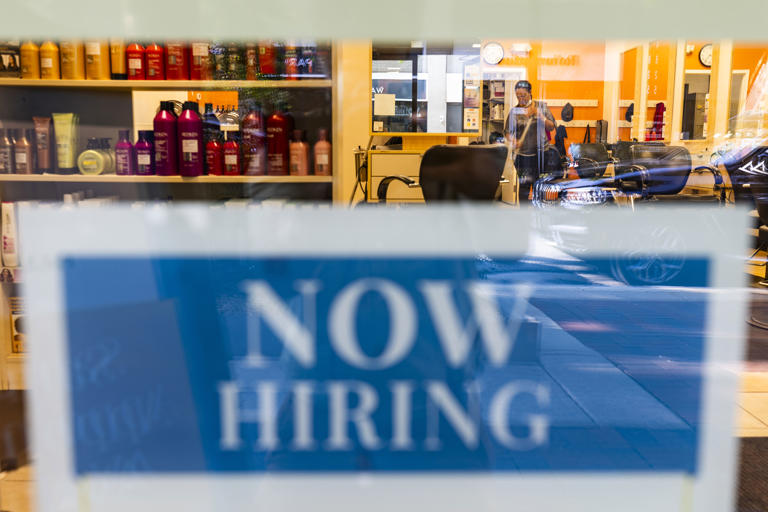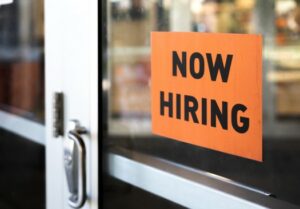The number of part-time workers in the U.S. is growing, which may be a sign that the economy is slowing down, says The Washington Post. Those holding down part-time jobs despite wanting to work full-time grew by about 452,000 in June — the biggest increase in more than three years, according to the Bureau of Labor Statistics. While economists are generally loath to base predictions on one data point, the jump in part-time work coincides with a cooldown in hiring in the same month, leading some experts to conclude that the job market and the economy are softening.
- The majority of workers who spoke with The Washington Post said their hours were shortened due to a slowdown in business.
- Service sector workers were most likely to have their hours cut.
By Tiffany Moustakas, Editor at LinkedIn News
Businesses are cutting workers’ hours in a warning sign for the economy

Businesses are starting to cut workers’ hours, forcing hundreds of thousands of people into part-time roles, in what could be an early warning sign for the economy.
The number of people who worked part time, but want to work full time, rose by 452,000 in June, the biggest jump in more than three years, according to the Bureau of Labor Statistics. In all, 4.2 million people were employed part time for economic reasons beyond their control, a 12 percent increase from the month before.
Economists warn against making too much of a single data point, but say the latest spike in involuntary part-time work could be a harbinger of layoffs to come, especially when combined with other signs of slowing in the job market.
“Looking at this indicator — along with two straight months of decline in Black employment — gives me a bit of pause,” said Michele Evermore, senior fellow at the Century Foundation and former deputy director at the Labor Department. “I don’t mean to be Chicken Little here, but this does tend to be a leading indicator that things are starting to slow down.”
Employers add 209,000 jobs in June, a slow but steady gain
In interviews with nearly a dozen people whose employers recently shortened their hours, all said it was the result of slowing sales. Most worked in service jobs — fast-food joints, grocery stores, hair salons — where schedules can be easily redrawn to keep up with demand. But in at least two instances, office workers said drops in revenue had forced their employers to shorten workers’ hours across the board.
“As a company we aren’t doing as well as we were this time last year,” said Liv Roach, who works at a sustainability nonprofit in New York where most full-time employees were recently downgraded to part-time. “Our nonprofit’s income is dependent on larger companies, and they’re starting to pull back. People keep saying recession fears are being assuaged, but no, recession fears are still very much here.”
Sharp economic slowdown triggers new recession fears
Economists have been bracing for a recession for well over a year. While the U.S. economy shrank during the first half of 2022 — which typically indicates a recession — it has notched healthy growth since then.
A surprisingly strong job market and continued spending have kept the economy afloat, even as the Federal Reserve aggressively raises interest rates to slow the economy and control inflation.
More than a year into the Fed’s campaign, which has caused borrowing costs to rise at the fastest rate on record, there are growing signs that the economy is softening: The housing market is in decline. Manufacturing in on the downswing. And job openings are waning.
“In recent months it’s become more difficult for unemployed workers to find jobs, and even once they do, to find enough hours,” said Julia Pollak, chief economist at ZipRecruiter. “This is mostly the labor market returning to a more normal, sustainable pace. But that’s down from a situation that was much more favorable to workers, so going back to normal means that some workers are going to be losing out.”
The first people to lose out, she added, are often the most vulnerable: those in hourly, low-wage jobs, Black and Latino workers, and immigrants.
Black women are finding better jobs than ever. A recession could reverse that.
In East Lansing, Mich., Lawrence Hart-Howlett recently took on a second gig after his $14.42-an-hour job at a Michigan State University cafeteria got slashed from five days a week to two days for the summer.
But a week into his new position as a dishwasher at a fast-food chain, his hours were cut by 20 percent. This week, he found out they’ve been whittled down again: To 15 hours a week instead of the original 24.
“I had to pick up this job to help cover for my first one, and now what am I supposed to do?” said Hart-Howlett, 37. “Honestly, it’s kind of upset me. I’m not sure I’ll be able to cover next month’s rent.”
Economists use a variety of tea leaves, including joblessness and bond yields, to determine the odds of a recession. Some say an increase in part-time work could signal a coming downturn, even before unemployment ticks up. Joshua Mask, an economics professor at Temple University, says in every recession since 1980, a marked increase in involuntary part-time work has predicted a downturn in the coming months.
“It’s a curious pattern that seems to hold up going back to the 1980s, and it’s potentially another leading indicator we could be using to detect recessions,” Mask said. “I don’t think of [part-time work] as being a predictor, but I do think it’s picking up on the early stages of a trend.”
That dynamic may be particularly exaggerated this time around, he said, since employers have struggled with labor shortages for so long. Job openings have outnumbered job seekers for much of the post-pandemic period. Many businesses have been forced to bump up pay and benefits, and offer perks to find and keep workers. That has led at least some employers to “hoard” workers longer than necessary.
“Instead of laying off 10 percent of your people, you can cut everybody’s hours by 10 percent,” said Evermore of the Century Foundation. “It’s a less visible way of saving money.”
Restaurants can’t find workers because they’ve found better jobs
Kyndal Mesenbrink was expecting to work the usual 60 hours a week this summer, slinging beers and vodka-sodas at a bar next to the Houston Astros stadium. But in the last month, business has slowed — and so has her work schedule.
She’s given about 30 hours a week these days, though she ends up working even fewer. Her pay has contracted accordingly, from about $350 in tips on a typical Friday night to $120.
“Everyone’s hours have been shorted, across the board,” the 23-year-old bartender said. “You might be scheduled for three hours but sometimes it’s so dead that 30 minutes in, they’re like, ‘OK, you can leave.’ You almost have to fight to stay at work.”
Even when customers do come in, she says they’re ordering cheaper drinks — well vodka instead of Grey Goose or Tito’s Handmade Vodka, for example. And while 32-ounce beers, which sell for $13, used to be the norm, she says most customers are springing for 16-ounce pours, which cost half as much.
“People don’t feel like they have the money to be going out and spending money at bars,” she said, adding that the average bar tab has dropped from about $50 to $25. “There is a lot of fear about what’s going to happen, and how the future is going to look.”
In San Francisco, the emergency pet hospital where Natasha Landen works recently laid off its part-time workers and cut all full-time employees down to 32 hours. Business has slowed “palpably” in recent months as inflation-pinched customers trade down, from the emergency hospital to less expensive general clinics.
Landen, 33, a receptionist, has started picking up weekend shifts at another veterinary clinic to make extra money.
“The numbers just stopped adding up on paper,” she said. “We aren’t seeing enough patients.”
Story by Abha Bhattarai, THE WASHINGTON POST









